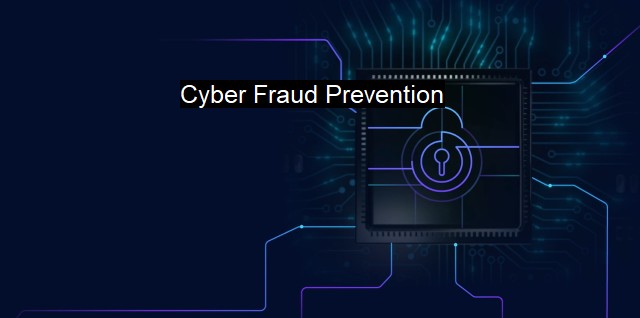What is Cyber Fraud Prevention?
Safeguarding Your Assets: The Importance of Cyber Fraud Prevention in the Digital Era
"Cyber fraud prevention" is a term that falls under the umbrella of cybersecurity dealing with policies, strategies, and measures devised to defend electronic data and systems from cyber fraud, which is intentionally deceitful activity conducted online often involving unauthorized access to system resources and data breach. Enhanced by developments in technology, cyber fraud can occur in various forms such as identity theft, phishing scams, ransomware, malicious software distribution, online auction fraud, and credit card fraud, among other activities planned to defraud individuals or organizations digitally.Cybersecurity primarily focuses on safeguarding computer systems and the data contained in them from potential threats, which are highly prevalent and ever-increasing in this digital age. Its objective is to maintain the confidentiality, integrity, and availability of data by thwarthatening the attempts made by unauthorized users to access or affect the systems adversely.
Cyber fraud prevention is an integral part of the broader cybersecurity domain. Its focus is on preempting and curtailing fraudulent online activity, ensuring that the users of a system, network, or digital platform are legitimate and have the appropriate access permissions.
Preventative measures continuously need to be updated as cybercriminals are persistently finding innovative ways to trick individuals or systems. Despite advancements in security technology such as firewall protection, antivirus software, and secure network systems, cyber fraud remains a grave concern due to the constantly evolving landscape of cyber threats.
Antivirus software is an effective tool in the fight against cyber fraud, protecting computer systems from threats that target the data they contain. Antivirus software identifies, quarantines, and removes malicious software (or "malware") that may have penetrated systems -- thus preventing cyber fraud ranging from keylogging, where every keystroke on a device is monitored, potentially revealing passwords and other sensitive information, to ransomware, where data is encrypted and made inaccessible until a ransom has been paid.
Cyber fraud prevention strategies include added layers of security to electronic systems, such as multi-factor authentication, which minimally requires users to provide two indications of authenticity before access is granted; biometric access, which may incorporate systems reading unique personal characteristics, such as fingerprints; and captcha or re-captcha, which are typically image verification mechanisms in place to ensure that a human and not a bot is accessing a system.
While technology and policy play vital roles in preventing cyber fraud, the human factor is significant. Training users to recognize the precursors of cyber fraud, such as malicious emails and attachments, imposter websites, suspicious account activities, is an effective prevention strategy.
A cyber-enriched lifestyle denotes an increased reliance on electronic systems to foster efficiencies and conveniences, from e-commerce activities to remote work and virtual learning environments. Although this shift provides many advantages, it is incumbent on individuals and organizations alike to prioritize cyber fraud prevention. Ensuring online environments' safety is not just the responsibility of tech-specialists but a universal obligation as everyone is potentially susceptible to these risks.
For enterprises, legislating stringent IT policies and educating employees about secure online practices are essential preventative steps against cyber fraud. Strong, secure practices include regularly updating software, using reliable antivirus programs, creating secure passwords, scrutinizing emails, and avoiding websites or online services that seem suspicious or ask for inappropriate information.
As technologies advance and internet connectivity expands, cyber fraud prevention will continue to be shaped by incessant changes and challenges, multidimensional in scope and complexity, necessitating constant vigilance, ongoing education, and enhanced security practices. The task of ensuring our continued digital security is unending and ever-evolving, requiring cooperation and awareness at both individual and organizational levels. The world of cybersecurity is always locked in a cat-and-mouse game, and therefore, we should always be on our guard to prevent being victimized by cyber fraud.

Cyber Fraud Prevention FAQs
What is cyber fraud prevention and why is it important?
Cyber fraud prevention refers to the measures taken to protect individuals and organizations from fraudulent activities in the digital space. It is important because cyber fraud can cause significant financial losses, reputational damage, and even lead to legal implications.What are some common types of cyber fraud and how can they be prevented?
Some common types of cyber fraud include phishing scams, identity theft, malware attacks, and social engineering. These can be prevented by regularly updating software and anti-virus programs, being cautious of suspicious emails or messages, using strong passwords, and educating employees on cybersecurity best practices.How can businesses and organizations prepare and respond to cyber fraud incidents?
Businesses and organizations should have a comprehensive incident response plan in place that includes identifying the type of incident, containing the damage, investigating the source of the incident, and reporting it to relevant authorities. It is also important to have regular training sessions to educate employees on how to recognize and report potential cyber fraud incidents.What are some best practices for individuals to protect themselves from cyber fraud?
Some best practices for individuals to protect themselves from cyber fraud include using strong, unique passwords for each online account, enabling two-factor authentication, avoiding clicking on suspicious links or downloads, keeping software and anti-virus programs up to date, and checking bank and credit card statements regularly for any unauthorized transactions.| | A | | | B | | | C | | | D | | | E | | | F | | | G | | | H | | | I | | | J | | | K | | | L | | | M | |
| | N | | | O | | | P | | | Q | | | R | | | S | | | T | | | U | | | V | | | W | | | X | | | Y | | | Z | |
| | 1 | | | 2 | | | 3 | | | 4 | | | 7 | | | 8 | | |||||||